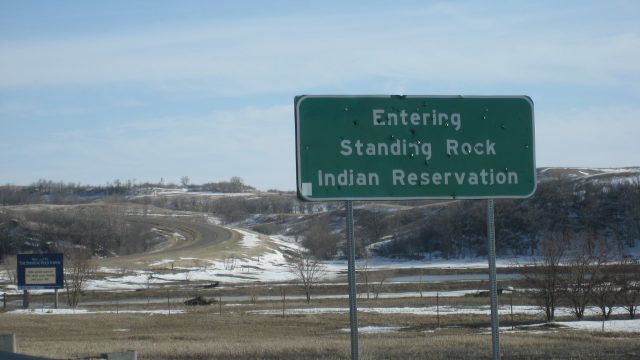From The Left: Learn More About Native Americans

For a while during my childhood, I lived on a Minnesota Indian Reservation. While I am not a Native American, and I did not attend the Native school, I was able to learn a lot about Native culture during monthly visits by tribal members to my school. This early exposure to Native American culture gave me a perspective that I have grown to understand is very rare in our current culture. The perspectives that many of my fellow non-natives have on the lives Native Americans have often been very baffling to me. In fact, there are more than a few common myths that are so readily accepted by many people that I thought I would dispel some of them.
Myth 1: Native Americans get to go to college for Free.
This one always seemed to come up during the Sioux nickname debate. It was normally presented something like this “I don’t understand why the Native Americans are so offended by the nickname, it honors them. Plus, we send them to college for free, so they shouldn’t complain”. While it is true that many schools, including UND, have programs to make paying for college easier for some Native Students, it is by no means a free ride that is given as an entitlement of birth. There is one college in the United States, Fort Lewis College in Durango Colorado that, as part of a 1911 agreement to build the college on tribal land, has offered a full tuition wavier to all Native American students.
Myth 2: Native American’s are to in love with their “Government Checks” to move off the reservation
This myth has many problems. First off, it is important to remember that the land that is currently part of the American reservation system is only a small sliver of the land that was covered during the original development of treaties. As “white” settlers came west, they took the most productive parts of reservations and reduced the size of the reservation to what eventually was not the most productive land. As a result of this, the opportunity of economic growth on the reservation is often very limited.
Second, the ideal of “Government Checks” for Native Americans is a bit of a misnomer. It is true that Native Americans are often overrepresented in the poverty class and they are eligible for many of the same anti-poverty supports that non-natives are. However, it not true those special checks are sent out just because people are living on a reservation. Some reservations, including some of them in North Dakota also have land lease agreements with the Federal government for tribal land. How this money is distributed, and how much money is distributed various greatly from tribe to tribe. On some reservations, you do not even need to live on a reservation to receive this land lease payment.
Finally, according the Census bureau, only about 22% of Native Americans live on a reservation. A vast majority of Native people live off the reservations at any given time, and, of course, they do a variety of different jobs.
Myth 3: Native Americans hate America and don’t want to participate in our country
It is hard to judge if people, hate, but I don’t think it is hard to judge who is a patriot. Per capita, more Native Americans serve in our armed forces than any other ethnic group. In fact, on reservation’s you will find very active Veterans groups, wonderful color guards, and other many displays of patriotism. In fact, in North Dakota, the highest concentration of Disabled Veterans is on the reservations.
There are many more myths that I could work on dispelling. Overall, I just wish that people would challenge their preconceptions of Native People. The story of the Native American people is extraordinarily complicated, is told far too seldom and far too inaccurately.
For more information that will help you learn, I recommend….
Little War on the Prairie a podcast on the Dakota War of 1862, which not only led to the largest mass execution in US History, but helped to write the early history of Minnesota and the Dakota’s.
Bury my Heart at Wounded Knee An outstanding story of struggles Native Americans faced during the final formations of the current reservation systems.




